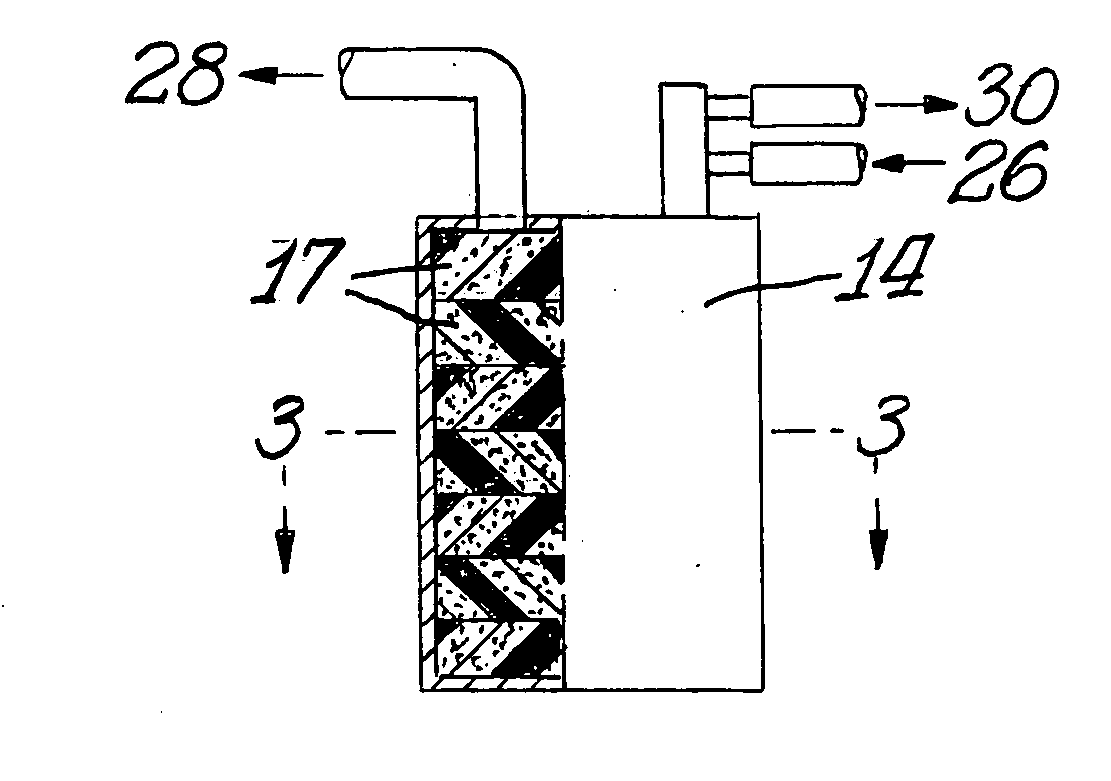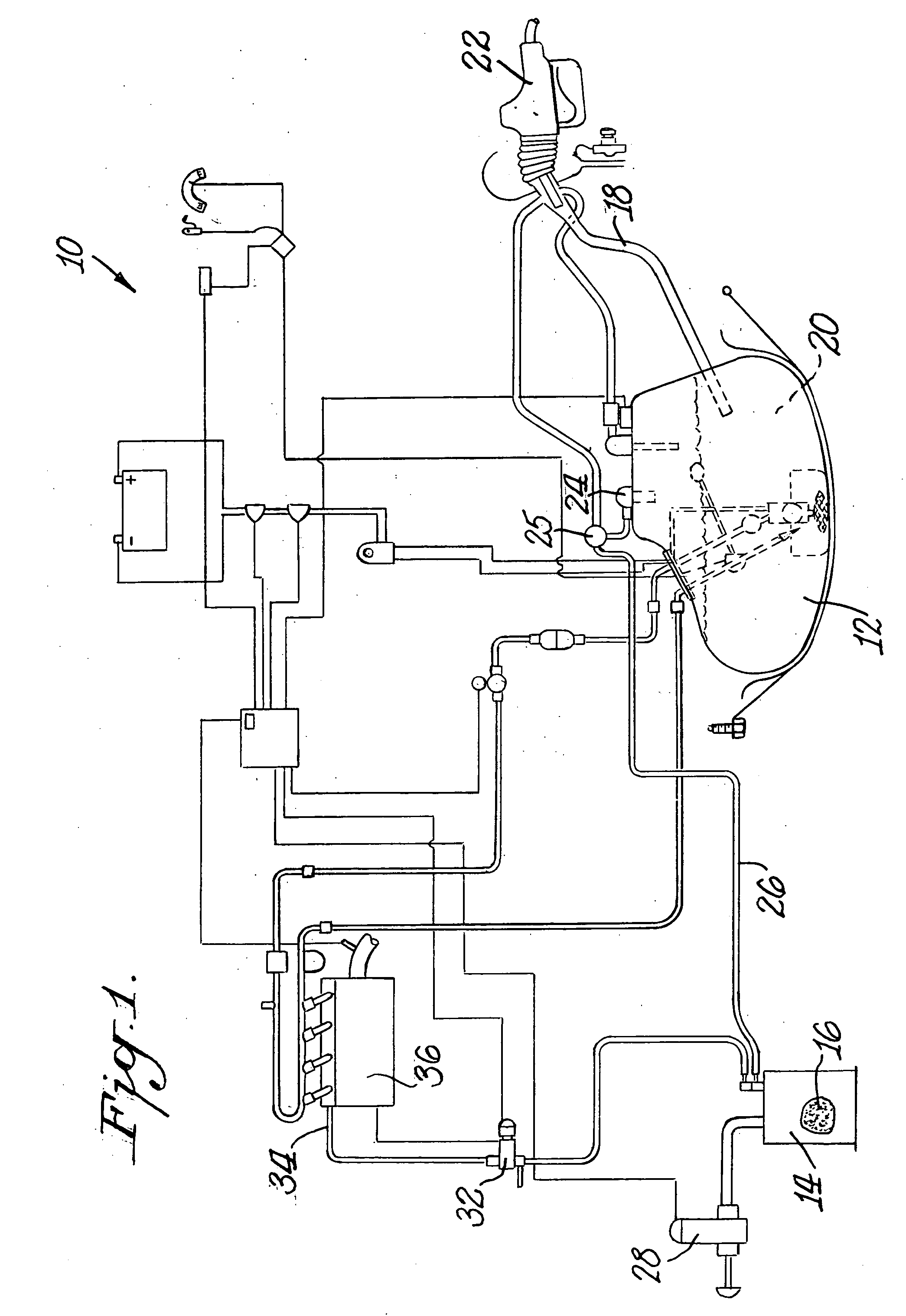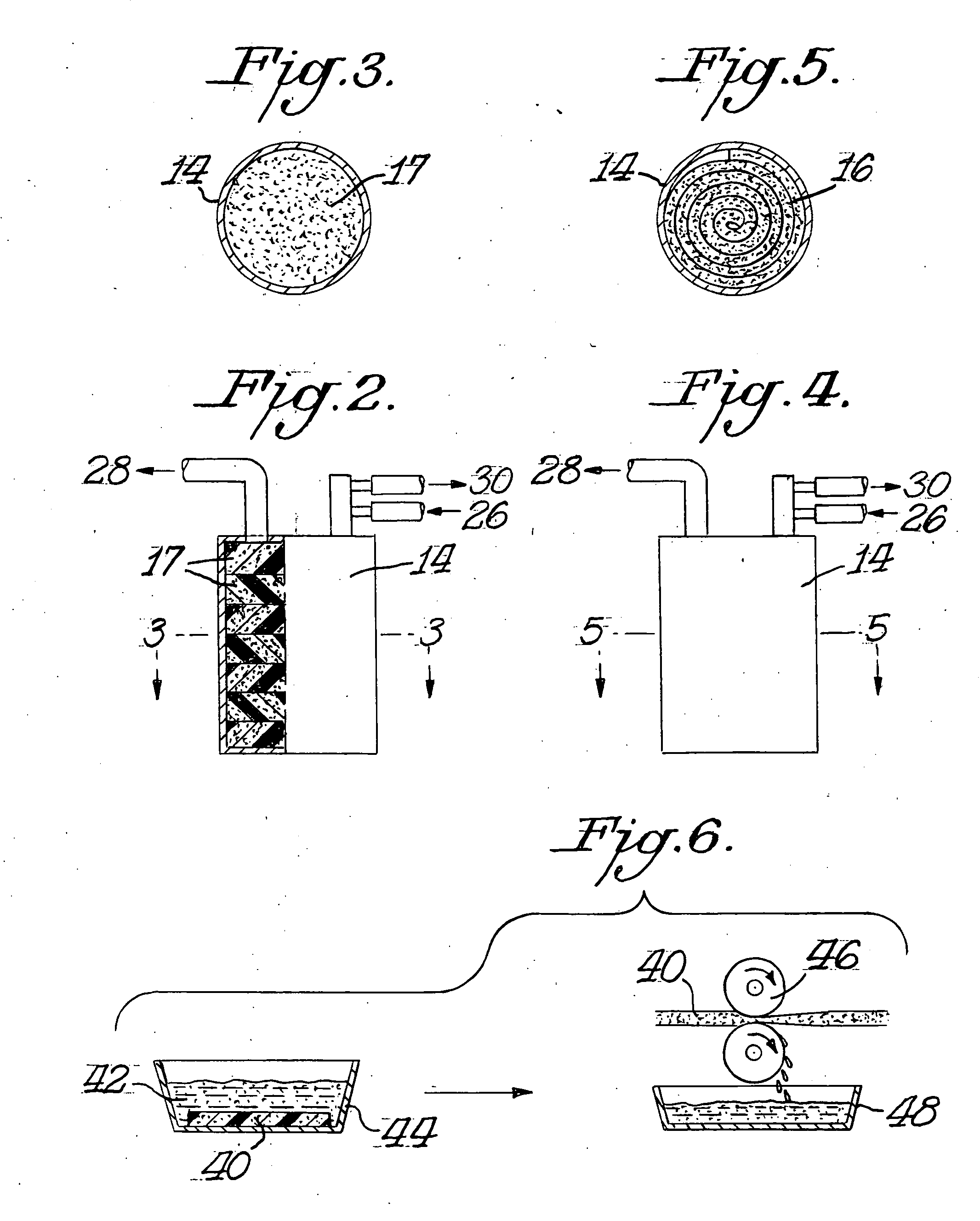Filter materials for absorbing hydrocarbons
a technology of hydrocarbon absorber and filter material, which is applied in the direction of separation process, dispersed particle separation, chemistry apparatus and process, etc., can solve the problems of change of flow path and filter performance, breakage and dust generation, and foam has not been used
- Summary
- Abstract
- Description
- Claims
- Application Information
AI Technical Summary
Benefits of technology
Problems solved by technology
Method used
Image
Examples
examples
[0045] Polyurethane Foam Compositions
[0046] Polyether polyurethane foam samples were prepared from the following ingredients:
Parts per hundredParts per hundredComponentEther FoamGraft Ether FoamVORANOL 3010 polyol100.085.0HS-1000.015.0TDI63.856.8KOSMOS 5-N0.310.31THANCAT NEM1.261.26K-290.080.08BLACK PIGMENT4.884.88L-6200.940.94C-1240.790.79Deionized water4.724.3
[0047]“Parts per hundred” denotes parts by weight per hundred parts polyol. VORANOL 3010 is a polyether polyol from Dow Chemical Company. HS-100 is a graft polyol from Bayer. Generally, a graft polyol such as HS-100 increases the stiffness of the resulting foam. TD80 is toluene diisocyanate also from Dow. KOSMOS 5-N and K-29 are tin catalysts from Degussa. THANCAT NEM is an amine catalyst from Air Products and Chemicals of Allentown, Pa. C-124 is an amine catalyst from Crompton. L-620 is a surfactant from GE Silicones (formerly Osi Specialties).
[0048] Polyester polyurethane foam samples were prepared from the following in...
PUM
| Property | Measurement | Unit |
|---|---|---|
| thickness | aaaaa | aaaaa |
| diameter | aaaaa | aaaaa |
| thickness | aaaaa | aaaaa |
Abstract
Description
Claims
Application Information
 Login to View More
Login to View More - R&D
- Intellectual Property
- Life Sciences
- Materials
- Tech Scout
- Unparalleled Data Quality
- Higher Quality Content
- 60% Fewer Hallucinations
Browse by: Latest US Patents, China's latest patents, Technical Efficacy Thesaurus, Application Domain, Technology Topic, Popular Technical Reports.
© 2025 PatSnap. All rights reserved.Legal|Privacy policy|Modern Slavery Act Transparency Statement|Sitemap|About US| Contact US: help@patsnap.com



